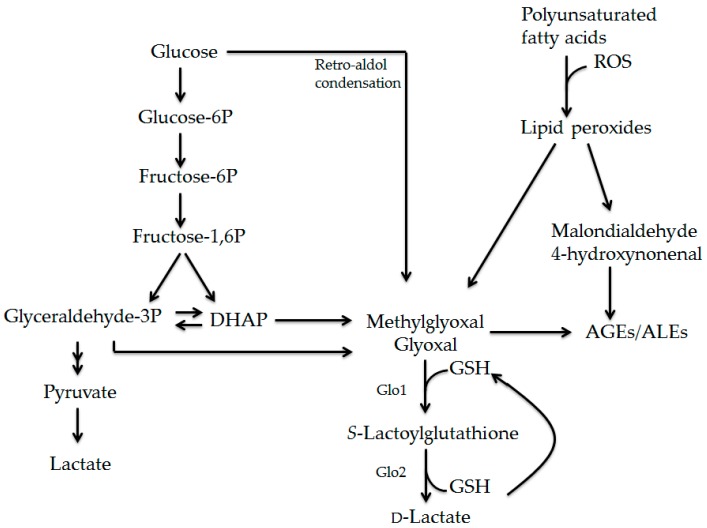Figure 1.
Formation of reactive dicarbonyl compounds and AGEs/ALEs via glucose and lipid intermediates. During glycolysis, glucose is converted into pyruvate and subsequently into lactate. Fragmentation of glyceraldehyde-3-phosphate (GAP) and dihydroxyacetone phosphate (DHAP) leads to the formation of methylglyoxal and glyoxal. In addition to glycolysis, lipid peroxidation of polyunsaturated fatty acids leads to the formation of lipid peroxides that can undergo fragmentation resulting in the formation of malondialdehyde, 4-hydroxynonenal, methylglyoxal, and glyoxal. Moreover, glyoxal can be directly created from glucose, via a retro-aldol condensation reaction. Incubation of these highly reactive compounds with proteins, lipids, and nucleic acids, leads to the fast formation of advanced glycation endproducts (AGEs) and advanced lipoxidation endproducts (ALEs). Methylglyoxal and glyoxal are detoxified via the glyoxalase system. First, methylglyoxal and glyoxal are converted to S-Lactoylglutathione by Glo1, which uses glutathione as a cofactor. Subsequently, S-Lactoylglutathione is metabolized to d-lactate by Glo-2. Glutathione gets recycled during this last step in the process.

